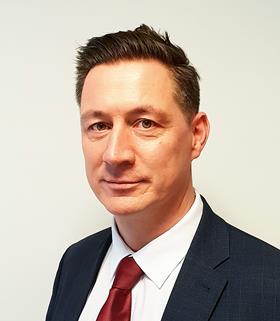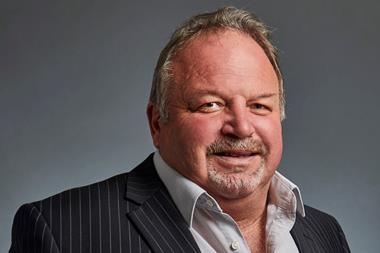’We can’t rewind the clock – we have to try to close the [talent] gap by accelerating development and looking at new talent pools,’ says UK chief operating officer
The challenges around attracting talented individuals to the insurance industry are well known – and the sector has devised various methods to solve these issues.

One of the major avenues of opportunity here is to think outside the box in terms of where that talent comes from by courting those that may already have relevant skills or experience but who currently work outside the insurance sector.
Peter Farrelly, chief operating officer at claims management and loss adjusting firm Sedgwick, says that this approach has proved fruitful for his firm already.
Speaking about Sedgwick’s specialist media and entertainment division, for example, Farrelly notes that the insurance market can offer people the chance to utilise their specialist skills in a new way.
He says: “As a consequence of the Covid-19 pandemic, many film and TV productions came to an end, so a lot of [the people working in that sector] had to find different jobs.
“A lot of them have actually moved into the insurance sector because there was an established sector within insurance for media and entertainment and we have retrained some of them to handle claims.”
In May this year, Sedgwick announced that former Hollywood producer and director Alex Nicoll would take on a role leading the firm’s UK media and entertainment claims division.
”[Nicoll] is a continuation of that theme,” says Farrelly. “It’s certainly unorthodox, but it’s the aspiration to look at new talent pools.”
Necessary developments
Ensuring that the insurance industry has a ”constant conveyor belt” of talent coming into it is vital if it is to continue to grow, says Farrelly.
Otherwise, expertise accrued over many years will be lost when people retire, with no one left to take up the mantle.

Farrelly explains: “Sedgwick is aware of succession planning challenges around the shortage of top end practitioners. A lot of people are retiring and that’s not peculiar to Sedgwick or loss adjusting.
”If you look back 20 years, there was a lack of investment around claims management – but we can’t rewind the clock. We have to try to close the [talent] gap by accelerating development and putting definition to looking at new talent pools.”
In his role as chief operating officer, Farrelly has been responsible for leading Sedgwick’s push around talent development and succession planning. He calls these areas “strategic necessities”.
But what does looking outside of the usual talent pool look like in practice?
According to Farrelly, one example of identifying existing skills and promoting social mobility that he has seen involved a 43-year-old bus driver from Glasgow who had attended night school to earn a degree in mechanical engineering.
This candidate applied to Sedgwick’s graduate programme and was successful, with Farrelly noting that the employee is now “a very polished engineering adjuster” and “one of [Sedgwick’s] top performers”.
He adds: ”Social mobility is vital. This candidate was, like me, from a council estate in Glasgow and we gave him this opportunity because we recognise that to address the succession planning challenge, we need to look beyond the obvious.”
Flex and bend
An important consideration for any business, however, is that it must be prepared to adjust and amend its recruitment processes if it going to tap into unorthodox sources of talent.
Read: How insurance firms can ‘openly embrace’ neurodiversity
Read: Owen Morris – Investing in neurodiverse individuals will ‘make the industry better’
Explore more diversity and inclusion-related content here or discover other interviews here
Additionally, Farrelly notes that firms “don’t really have an option” when deciding whether to be more flexible in their workplace practices because that is increasingly what talented candidates are expecting.
“Gen Z want to be able to align their cultural values with our corporate values and are, more and more, starting their careers later,” he says.
“As an industry, we need to be able to answer those questions – whether that’s allowing more flexibility or in terms of home and hybrid working.”
Another example of showcasing flexibility is Sedgwick’s focus on nurturing neurodiverse talent, which refers to those that have conditions such as autism or attention deficit hyperactivity disorder (ADHD).
The firm launched its own Disability and Neurodiversity Colleague Research Group in May 2024 to promote understanding of neurodiversity as a first step, but Farrelly hopes that Sedgwick’s open stance on the neurodiverse population will allow it to “exploit those opportunities for common benefit”.
Normalising difference
Perhaps the most important operational change when implementing a strategy focused on new talent is the necessity of a plan around what to do with that talent.
Read: Can ’power of social media’ attract and retain next generation of talent?
Explore more diversity and inclusion-related content here or discover other interviews here
Farrelly explains: “We’re really passionate about bringing talented people into our business, but you can’t bring them in without a plan. There needs to be definition to their development and support.
“I remember the days of graduates entering [the] business who would become a bit of an inconvenience after a while and then leave because they weren’t getting enough attention. That’s not good enough any more and planning around development is so important.”
Another important consideration is that existing staff must be trained on exactly what is expected of them in terms of being able to identify talent.
Farrelly finishes: ”If we make use of a talent pool that we didn’t really focus on before, then you have got to have managers who are able to identify that – managers who are able to identify people that can bring fantastic new angles, thoughts and talents to our business.
”The biggest risk to talent development in any business is that it can become stale – you have to be constantly challenging yourself and asking what’s next. It’s important to regularly put business as usual to the side and find time to think about that question.”
Hosted by comedian and actor Tom Allen, 34 Gold, 23 Silver and 22 Bronze awards were handed out across an amazing 34 categories recognising brilliance and innovation right across the breadth of UK general insurance.



















































No comments yet